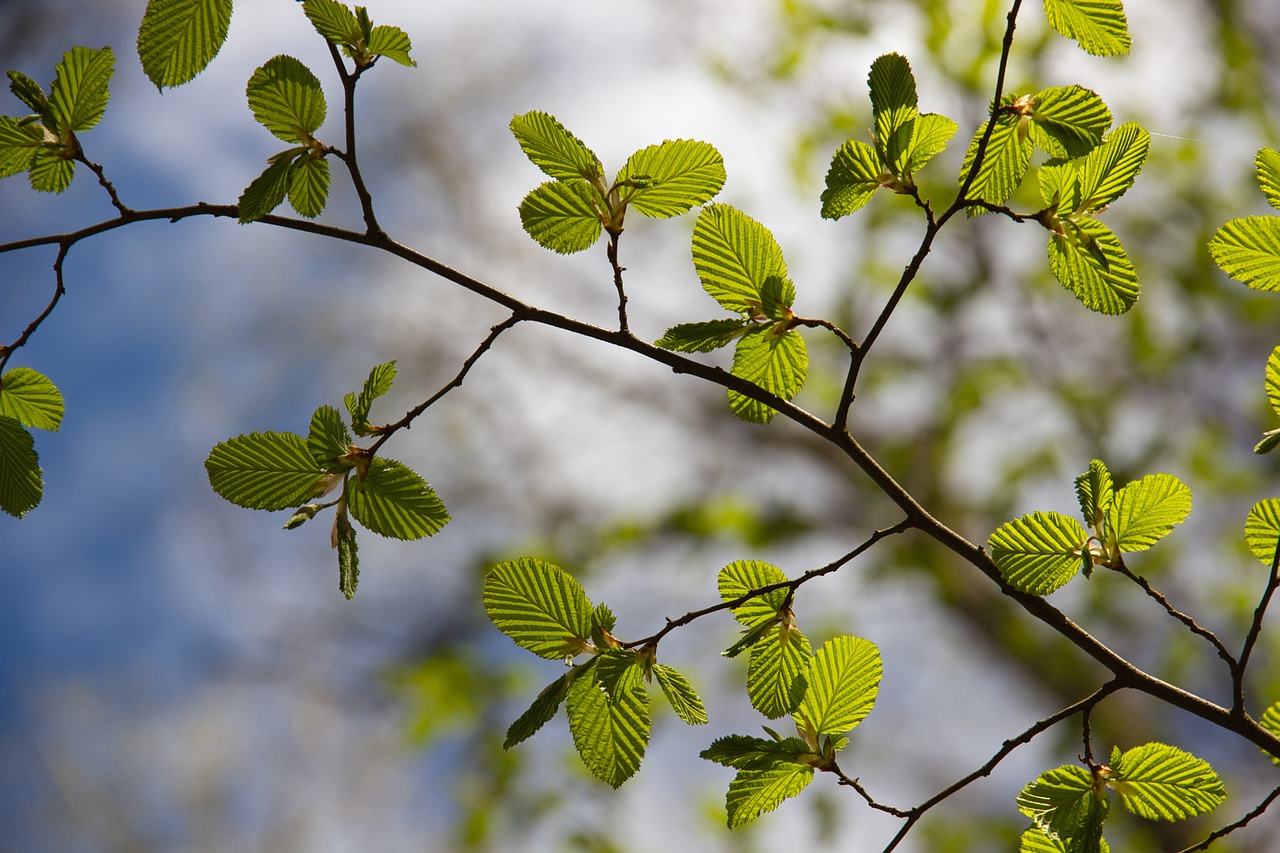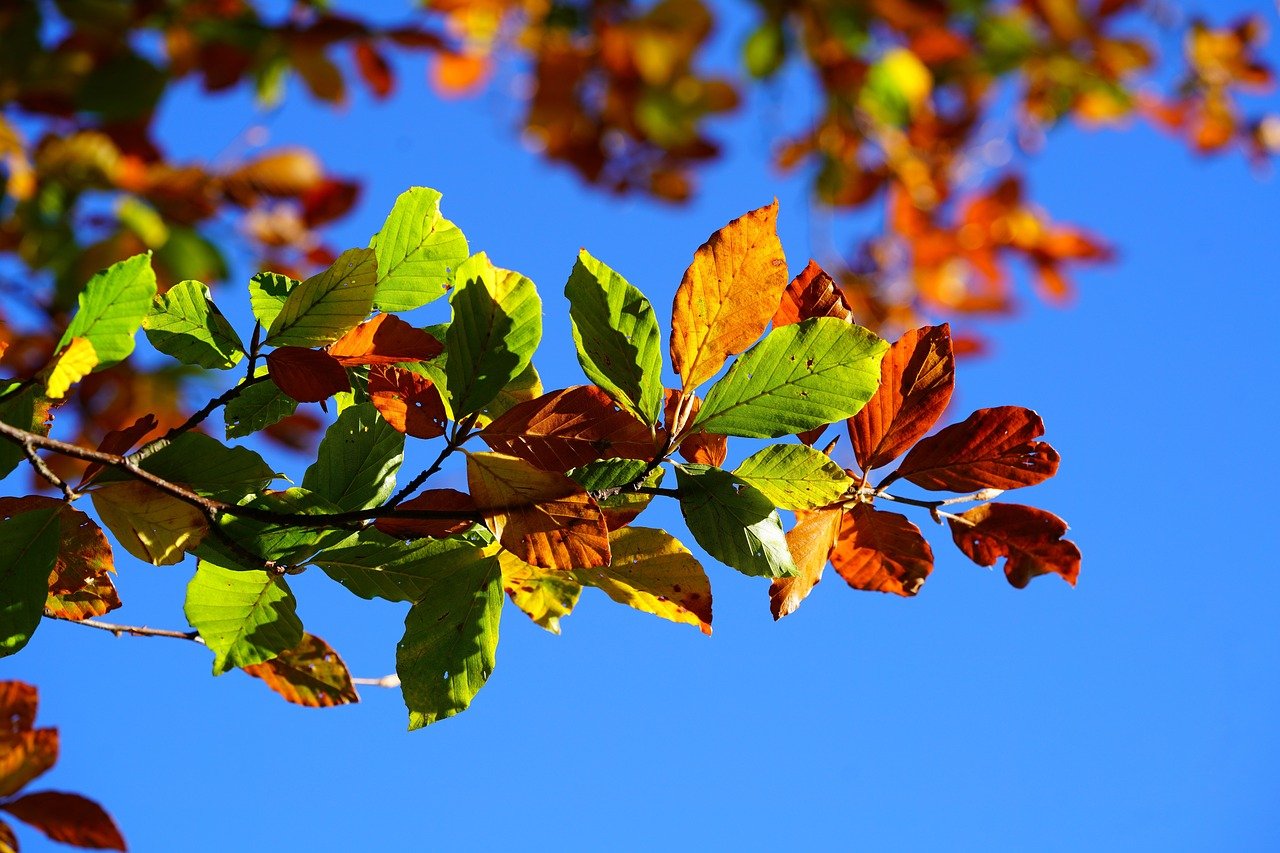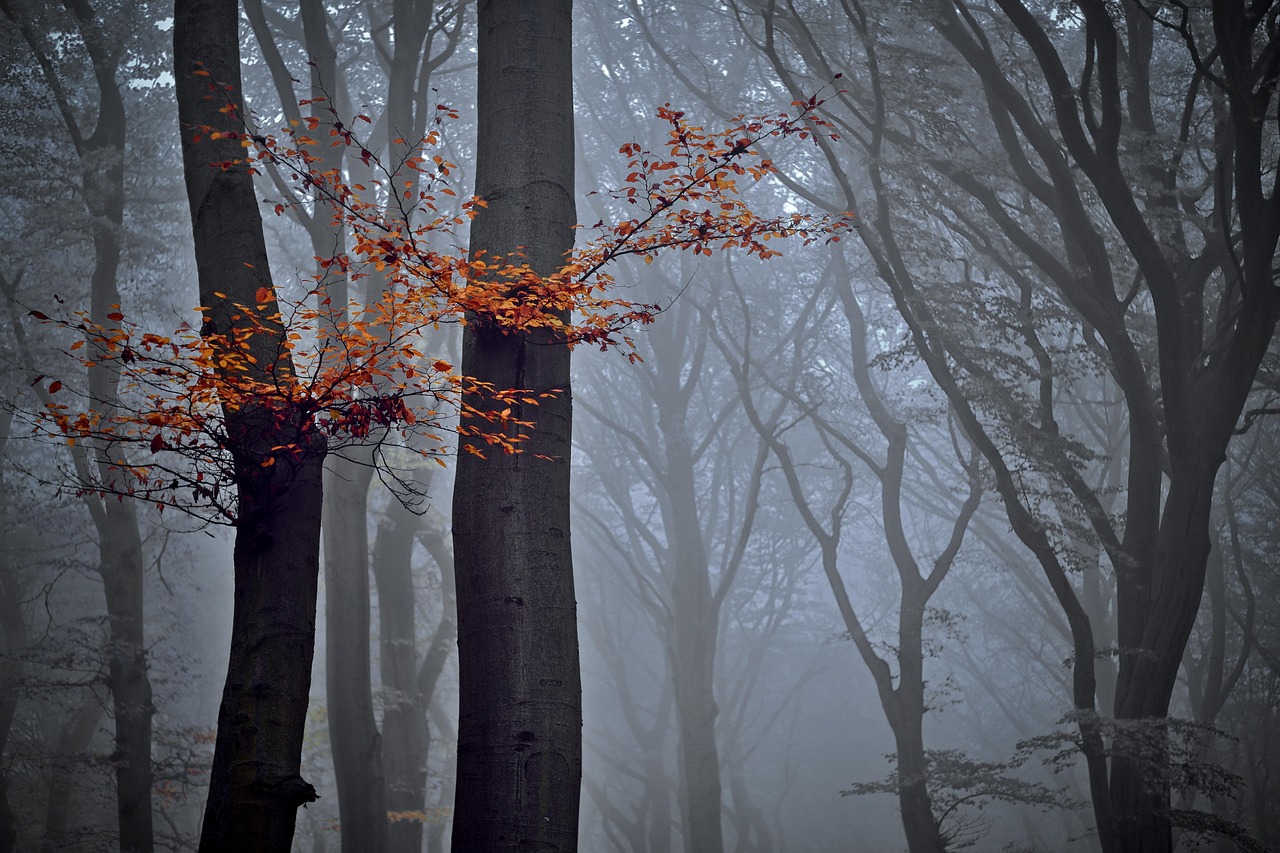The Tri Color Beech tree, known for its striking foliage, typically has a moderate growth rate of 12 to 18 inches per year. This growth rate contributes to its appealing aesthetic, making it a popular choice for gardens and landscapes.
The Tri Color Beech tree, or Fagus sylvatica ‘Tricolor’, is a stunning deciduous tree that stands out due to its unique foliage. This tree is a cultivar of the European Beech, renowned for its beautiful tri-colored leaves. The leaves exhibit shades of pink, cream, and green, creating an eye-catching display throughout the growing season. The Tri Color Beech tree is not just valued for its visual appeal but also for its ability to adapt to various garden settings.

Understanding the growth rate of the Tri Color Beech is crucial for gardeners and landscape designers. This tree thrives in well-drained, fertile soils and prefers full sun to partial shade. Its moderate growth rate allows it to establish itself without overwhelming nearby plants. However, its unique foliage can make it a focal point in any landscape design.
Growth Characteristics
The growth characteristics of the Tri Color Beech tree are essential for anyone considering this tree for their property. Here are some key points regarding its growth:
- Height: The Tri Color Beech can reach heights between 30 to 50 feet at maturity.
- Width: Its spread can range from 20 to 35 feet, making it a sizeable addition to any garden.
- Growth Rate: As mentioned earlier, it grows about 12 to 18 inches per year.
- Longevity: This tree can live for over 100 years under optimal conditions.
When planted in an appropriate location, the Tri Color Beech can provide vibrant color and shade. Its growth rate can vary depending on environmental factors such as soil quality, water availability, and sunlight exposure. Gardeners should keep these factors in mind when planning their planting strategies.

Ideal Growing Conditions
The Tri Color Beech tree flourishes under specific growing conditions. Here are the ideal factors to consider:
| Factor | Ideal Condition |
|---|---|
| Soil Type | Well-drained loamy soil |
| pH Level | 6.0 to 7.0 (slightly acidic to neutral) |
| Sunlight | Full sun to partial shade |
| Watering | Consistent moisture without waterlogging |
These conditions ensure that the Tri Color Beech tree not only grows at its optimal rate but also maintains the vibrant colors that make it so desirable. Regular watering during dry spells is essential, especially in the first few years after planting. Mulching around the base can help retain moisture and suppress weeds.
Maintenance and Care
Caring for a Tri Color Beech tree involves several important practices to promote healthy growth. Regular maintenance will enhance its aesthetic appeal and longevity:

- Pruning: Light pruning in early spring can help maintain shape and remove any dead or diseased branches.
- Pest Control: Keep an eye out for common pests such as aphids and scale insects.
- Fertilization: Apply a balanced fertilizer in early spring to support healthy growth.
- Mulching: Use organic mulch to conserve moisture and regulate soil temperature.
By adhering to these maintenance practices, gardeners can ensure that their Tri Color Beech trees not only grow at a healthy rate but also provide stunning foliage year after year. The combination of proper care and ideal growing conditions allows this beautiful tree to thrive in many landscapes.
Environmental Impact on Growth Rate
The growth rate of the Tri Color Beech tree can be significantly influenced by environmental factors. Understanding how these factors interact with the tree’s growth can help gardeners create optimal conditions for their plants. Key environmental influences include soil quality, climate, and surrounding vegetation.
Soil Quality
Soil plays a vital role in the growth of the Tri Color Beech tree. The following soil characteristics are particularly important:
- Drainage: Well-drained soil prevents root rot and promotes healthy growth.
- Nutrient Content: A nutrient-rich soil supports vigorous foliage development.
- Soil pH: As noted before, a pH level between 6.0 and 7.0 is ideal for nutrient absorption.
The presence of organic matter in the soil can improve its structure, helping retain moisture and nutrients. Regular testing of soil can help gardeners monitor these conditions and make necessary adjustments.

Climate Considerations
The climate in which the Tri Color Beech tree is planted can also affect its growth rate. Here are some climatic factors to consider:
- Temperature: The Tri Color Beech thrives in temperate climates. Extreme temperatures, both hot and cold, can hinder growth.
- Humidity: Moderate humidity levels promote healthy foliage. Too much humidity can lead to fungal diseases.
- Rainfall: Consistent rainfall is essential, but over-saturation can be harmful. Adequate drainage is crucial.
In regions with extreme temperature fluctuations, providing some protection from harsh winds or frost is beneficial for young trees. This can be achieved using windbreaks or protective coverings during the coldest months.
Companion Planting
Companion planting can enhance the growth of the Tri Color Beech tree by promoting biodiversity and improving soil health. Some plants work particularly well when grown near beech trees:
- Ground Covers: Low-growing plants such as creeping thyme or clover can help retain moisture and suppress weeds.
- Ornamental Grasses: Grasses like blue fescue or feather reed grass can add texture and contrast to the landscape.
- Flowering Perennials: Plants like hostas and astilbes provide visual interest and attract beneficial pollinators.
When selecting companion plants, it is essential to consider their light and water requirements. Choosing plants that thrive under similar conditions will result in a more harmonious garden environment.
Pest and Disease Management
The Tri Color Beech tree, while generally resilient, can be susceptible to certain pests and diseases. Effective management strategies include:
Common Pests
- Aphids: These small insects can weaken the tree by feeding on sap. Regular monitoring and insecticidal soap can control their population.
- Scale Insects: Scale can create a sticky residue on leaves, leading to sooty mold. Horticultural oil treatments are effective in managing these pests.
- Leaf Miners: These pests burrow into leaves, causing damage. Removing affected leaves can help minimize their impact.
Disease Prevention
Apart from pests, the Tri Color Beech can face various diseases, most commonly related to moisture levels:
- Root Rot: Caused by overwatering or poorly drained soil, root rot can be prevented by ensuring proper drainage.
- Fungal Infections: Fungal diseases may arise in high humidity situations. Ensuring good air circulation around the tree helps mitigate this risk.
Regular inspections of the tree’s foliage and branches allow for early detection of any issues, leading to more effective treatment options.
Seasonal Growth Patterns
The growth patterns of the Tri Color Beech tree vary with the seasons. Understanding these patterns can help in planning maintenance activities:
- Spring: This is the active growth season for the tree. New leaves emerge, and it is a good time for fertilization.
- Summer: During summer, the tree reaches full leaf maturity. Regular watering is essential to support foliage health.
- Fall: The foliage transitions to vibrant colors before dropping. This is an excellent time for pruning and preparing for winter.
- winter: The tree enters dormancy. Protecting young trees from severe weather is crucial during this period.
A keen understanding of these seasonal changes allows gardeners to optimize their care routines, ensuring the Tri Color Beech tree remains healthy and vibrant throughout the year.
Foliage Color and Texture
The Tri Color Beech tree is celebrated not only for its growth rate but also for its stunning foliage, which changes throughout the seasons. The unique coloration and texture of its leaves greatly contribute to its aesthetic appeal in any landscape. Understanding these characteristics can help gardeners appreciate and utilize the tree effectively.
Leaf Color Changes
The leaves of the Tri Color Beech tree are known for their striking tri-colored appearance. Key color changes occur during different seasons:
- Spring: New leaves emerge in shades of pink and creamy white, providing a vibrant start to the growing season.
- Summer: As the leaves mature, they turn a rich green with hints of pink along the edges, creating a lush canopy.
- Fall: The foliage transitions to brilliant hues of golden yellow and deep orange, making it a standout during autumn.
- Winter: The tree’s bare branches reveal a graceful silhouette, while dried leaves may cling on, adding texture to the winter landscape.
This dynamic color transition can create visual interest in gardens throughout the year. The combination of colors allows for striking contrasts against other plants and flowers.
Leaf Texture
The texture of the Tri Color Beech’s leaves also adds to its ornamental value. The leaves are:
- Smooth: They have a glossy finish that reflects light beautifully, enhancing their color.
- Elliptical: The shape of the leaves is elongated, contributing to the tree’s overall elegance.
- Thick: The durability of the leaves helps them withstand various environmental conditions.
This rich texture can create interesting contrasts when combined with other plants that have different leaf shapes and textures.
Uses in Landscaping
The Tri Color Beech tree is a popular choice in landscaping due to its unique aesthetic qualities and moderate growth rate. Here are some common uses for this tree in garden design:
Specimen Tree
The Tri Color Beech can serve as a stunning specimen tree in gardens and parks. Its vibrant foliage makes it a focal point, drawing attention from visitors. When placed strategically, it enhances the overall design of the landscape.
Shade Provider
With its broad canopy and mature height, this tree provides ample shade during hot summer months. Planting it near patios or outdoor seating areas can create comfortable and inviting spaces for relaxation and gatherings.
Color Contrast
The unique color palette of the Tri Color Beech complements various plantings. It pairs well with:
- Flowering shrubs: Such as hydrangeas or azaleas, which can enhance the color scheme.
- Perennials: Like hostas or daylilies, providing contrast in both height and texture.
- Evergreens: To create year-round interest with contrasting foliage.
Incorporating the Tri Color Beech tree into diverse plantings can lead to visually appealing combinations that change with the seasons.
Propagation Techniques
Propagating the Tri Color Beech tree can be an exciting endeavor for gardeners looking to expand their collection. There are several methods for propagating this tree:
Seed Propagation
One of the most common methods is through seed propagation. Here’s how it works:
- Seed Collection: Collect seeds in late fall when they are mature.
- Stratification: Seeds require a period of cold stratification to germinate. Place them in a damp medium and store them in a refrigerator for 30 to 60 days.
- Sowing: After stratification, sow seeds in well-drained soil in early spring, keeping them moist until germination occurs.
Cutting Propagation
An alternative method involves taking cuttings from healthy trees. This method is often more reliable:
- Selecting Cuttings: Take semi-hardwood cuttings in late spring or early summer.
- Treating Cuttings: Dip the cut ends in rooting hormone to encourage root development.
- Planting Cuttings: Place them in a pot with a suitable growing medium and maintain moisture until roots develop.
Both methods require patience and care, but successful propagation can yield new trees that continue to add beauty to landscapes.
Common Challenges
<pWhile the Tri Color Beech tree is relatively easy to care for, it does face some challenges that gardeners should be aware of:
- Disease Susceptibility: As mentioned earlier, it can be prone to certain diseases, particularly if conditions are not optimal.
- Pest Infestations: Regular monitoring for pests is necessary to prevent infestations from becoming severe.
- Environmental Stressors: Factors such as drought or extreme temperatures can adversely affect growth and foliage quality.
A proactive approach to care and attention to environmental conditions will help ensure the Tri Color Beech tree remains healthy and vibrant throughout its life cycle.
Additional Considerations for Successful Growth
In addition to the common challenges previously discussed, there are further considerations that can enhance the growth and health of the Tri Color Beech tree. These factors can aid gardeners in cultivating a thriving specimen.
Watering Practices
Establishing a proper watering routine is crucial, particularly in the early stages of growth. Here are some best practices for watering:
- Deep Watering: Water deeply and less frequently to encourage deep root development. This can help the tree withstand dry periods.
- Soil Moisture Check: Regularly check the soil moisture before watering. The top inch of soil should be dry before applying more water.
- Mulch Application: Adding mulch around the base can help retain soil moisture and regulate temperature.
By implementing these watering practices, gardeners can significantly enhance the overall health of their Tri Color Beech trees.
Fertilization Timing
While fertilization supports growth, timing is critical to avoid over-fertilizing, which can harm the tree. Here are some guidelines:
- Early Spring: Apply a balanced, slow-release fertilizer at the beginning of the growing season to support leaf and root development.
- Avoid Late Season Fertilization: Fertilizing too late in the season can promote new growth that may not harden off before winter.
- Organic Options: Consider using organic fertilizers, such as compost or well-rotted manure, to improve soil health while providing nutrients.
This careful approach to fertilization will foster strong growth while minimizing stress on the tree.
Ecological Benefits
The Tri Color Beech tree offers several ecological benefits that contribute positively to its environment. Understanding these benefits highlights the importance of planting and maintaining this species.
- Habitat Creation: The tree serves as a habitat for various wildlife, including birds and insects, helping to maintain biodiversity.
- Air Quality Improvement: Like all trees, it helps improve air quality by absorbing carbon dioxide and releasing oxygen.
- Soil Stabilization: The extensive root system aids in preventing soil erosion, contributing to healthier landscapes.
These ecological benefits further underscore the value of incorporating Tri Color Beech trees into gardens and landscapes.
Final Thoughts
The Tri Color Beech tree is a remarkable addition to any landscape, known for its stunning foliage, moderate growth rate, and unique characteristics. Its adaptability to various growing conditions makes it an appealing choice for both novice and experienced gardeners alike. While proper care and attention to potential challenges are essential for success, the rewards of cultivating this beautiful tree are well worth the effort.
Understanding its seasonal growth patterns, foliage characteristics, and ecological benefits provides valuable insights that can enhance gardening practices. By implementing effective watering and fertilization techniques, gardeners can ensure that their Tri Color Beech trees thrive and contribute beauty and interest to their environments year-round.
As you consider adding a Tri Color Beech tree to your landscape, remember that its vibrant colors and elegant form will not only enhance your garden but will also play a role in supporting local wildlife and improving air quality. With a little care and attention, this stunning tree can become a cherished part of your outdoor space for generations to come.
